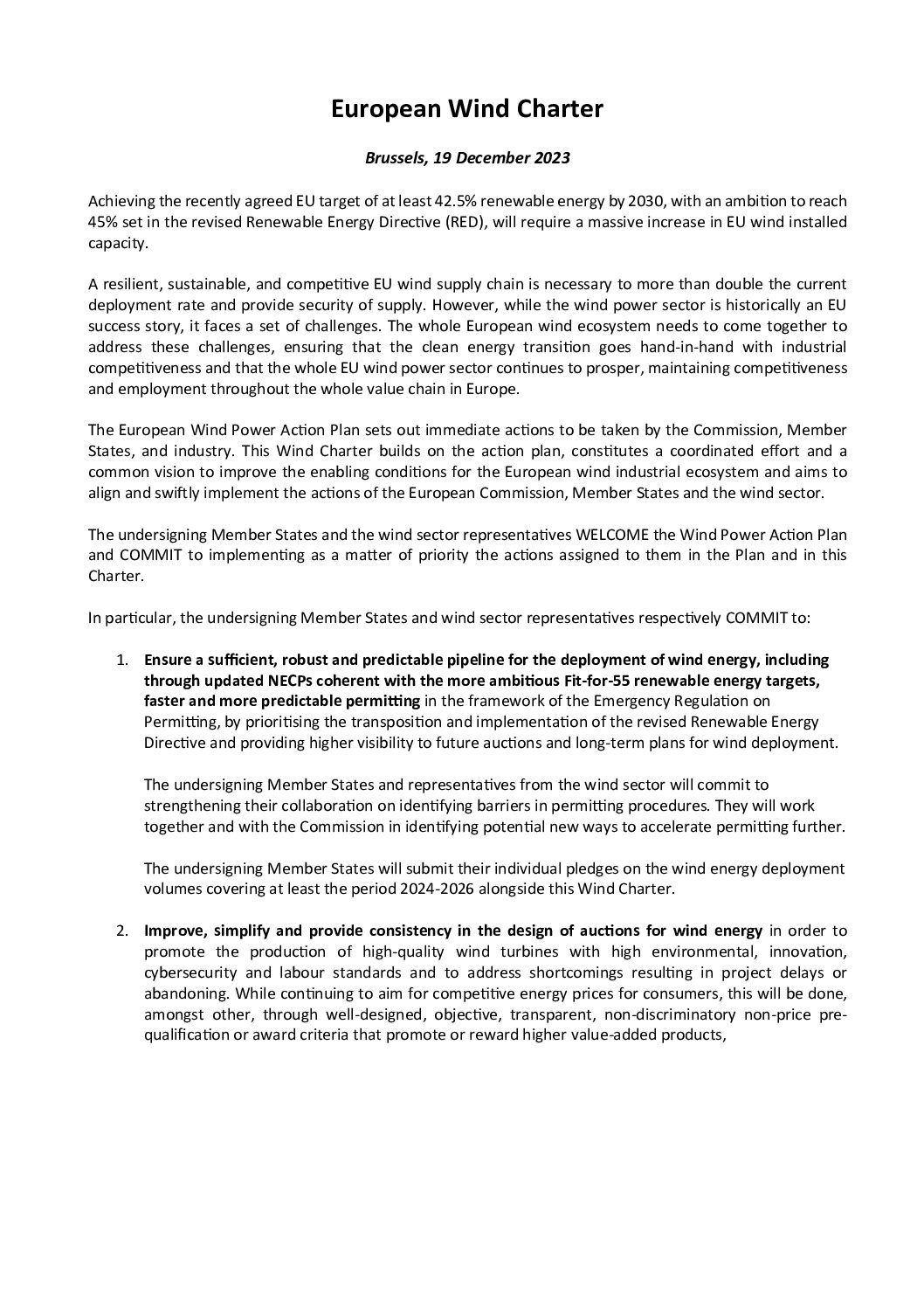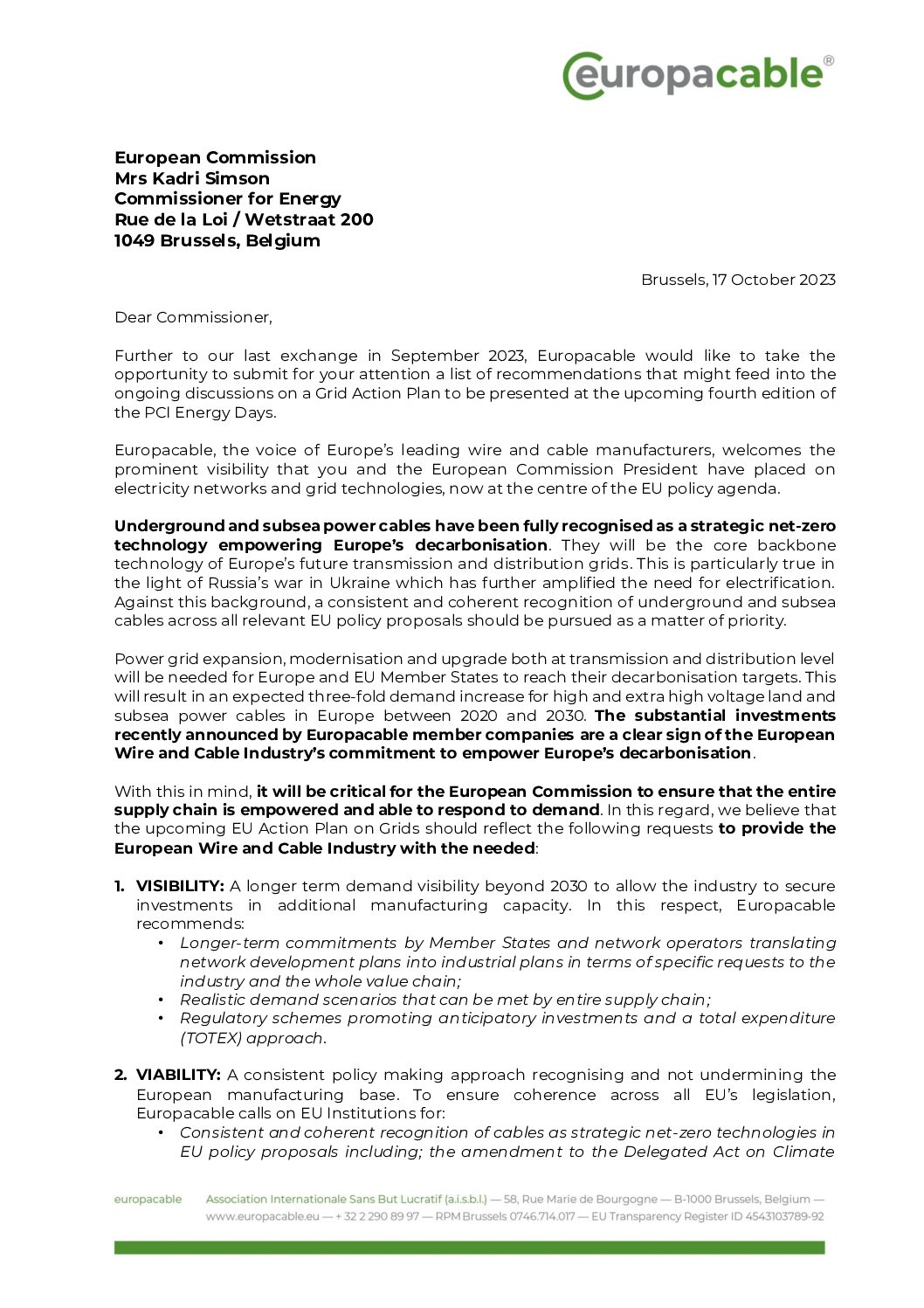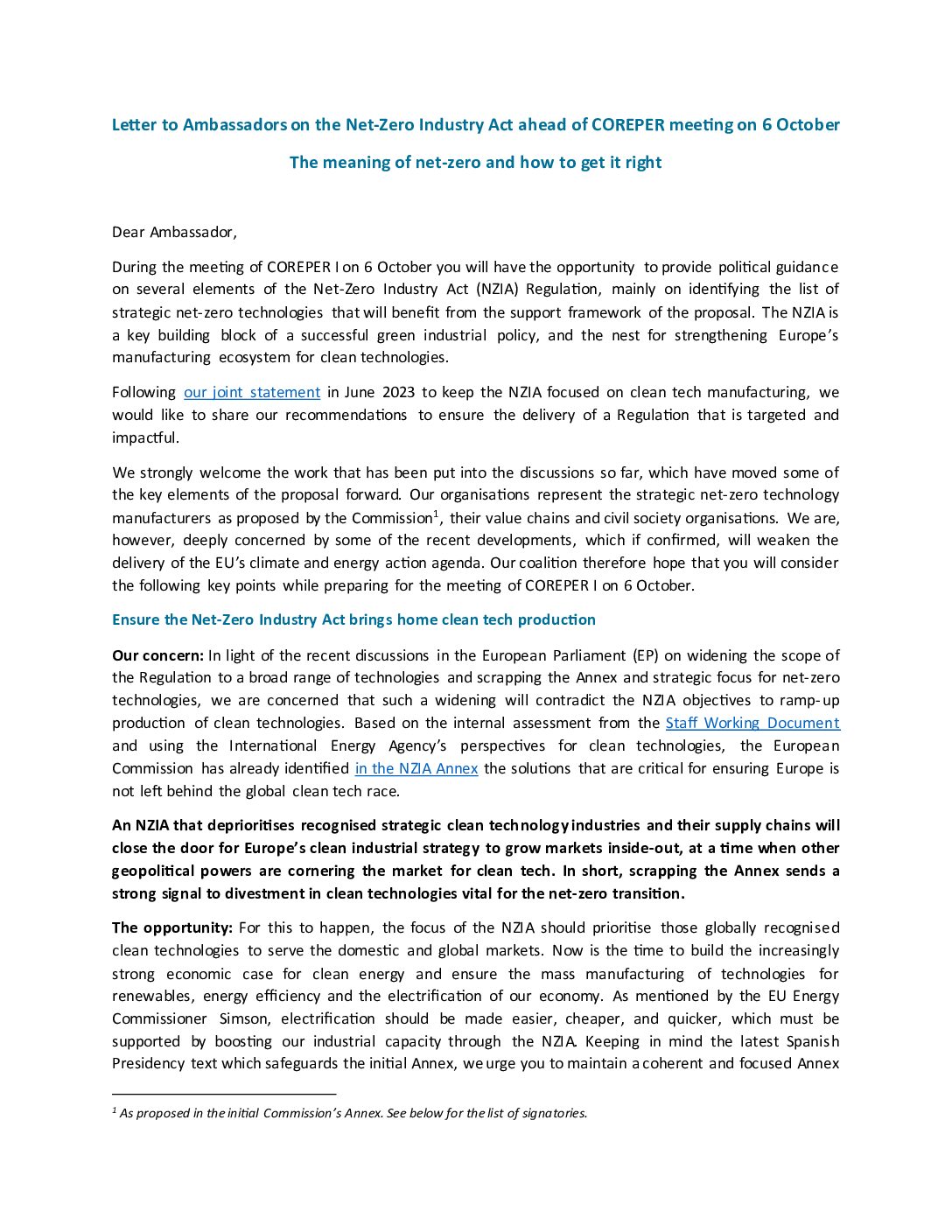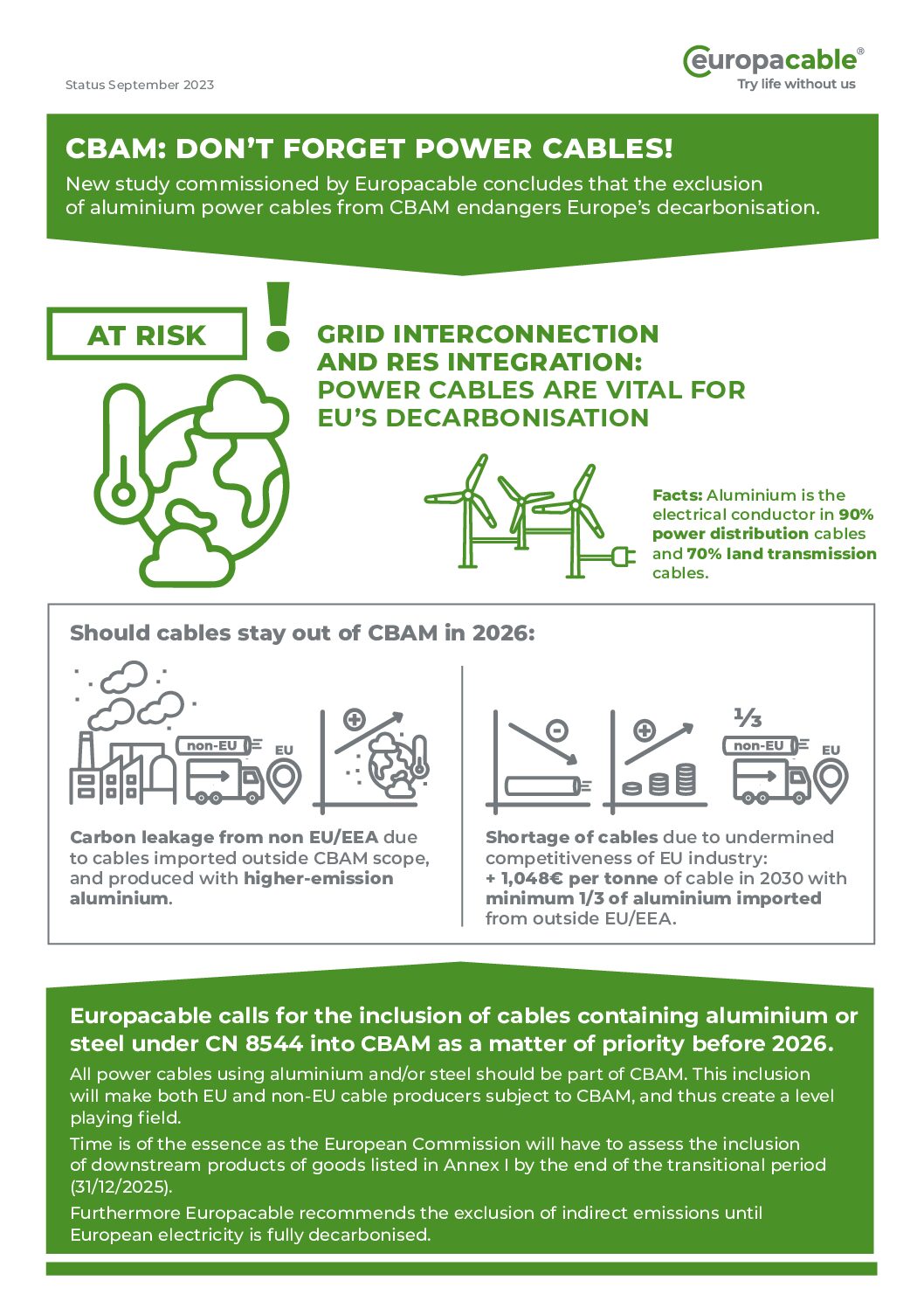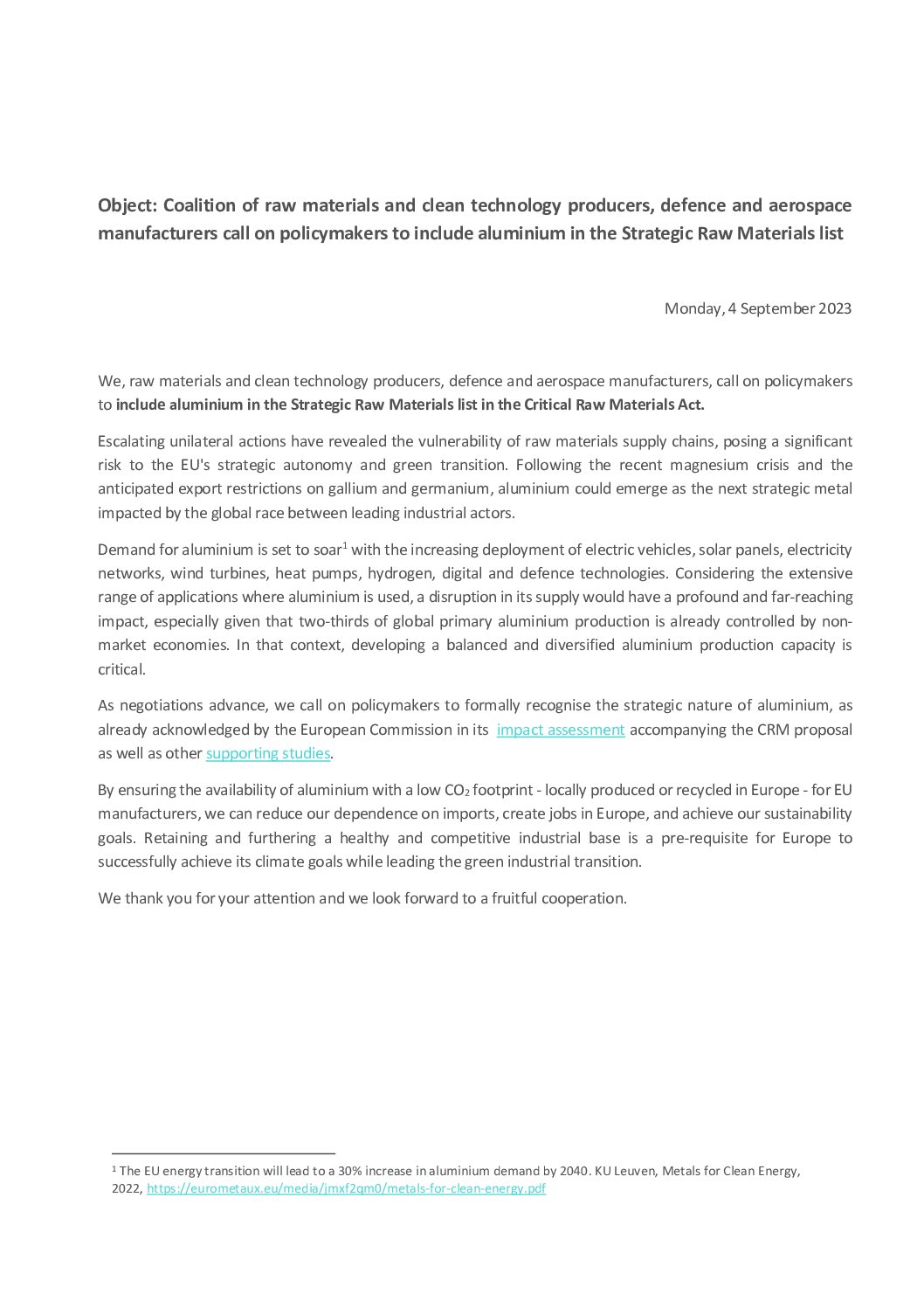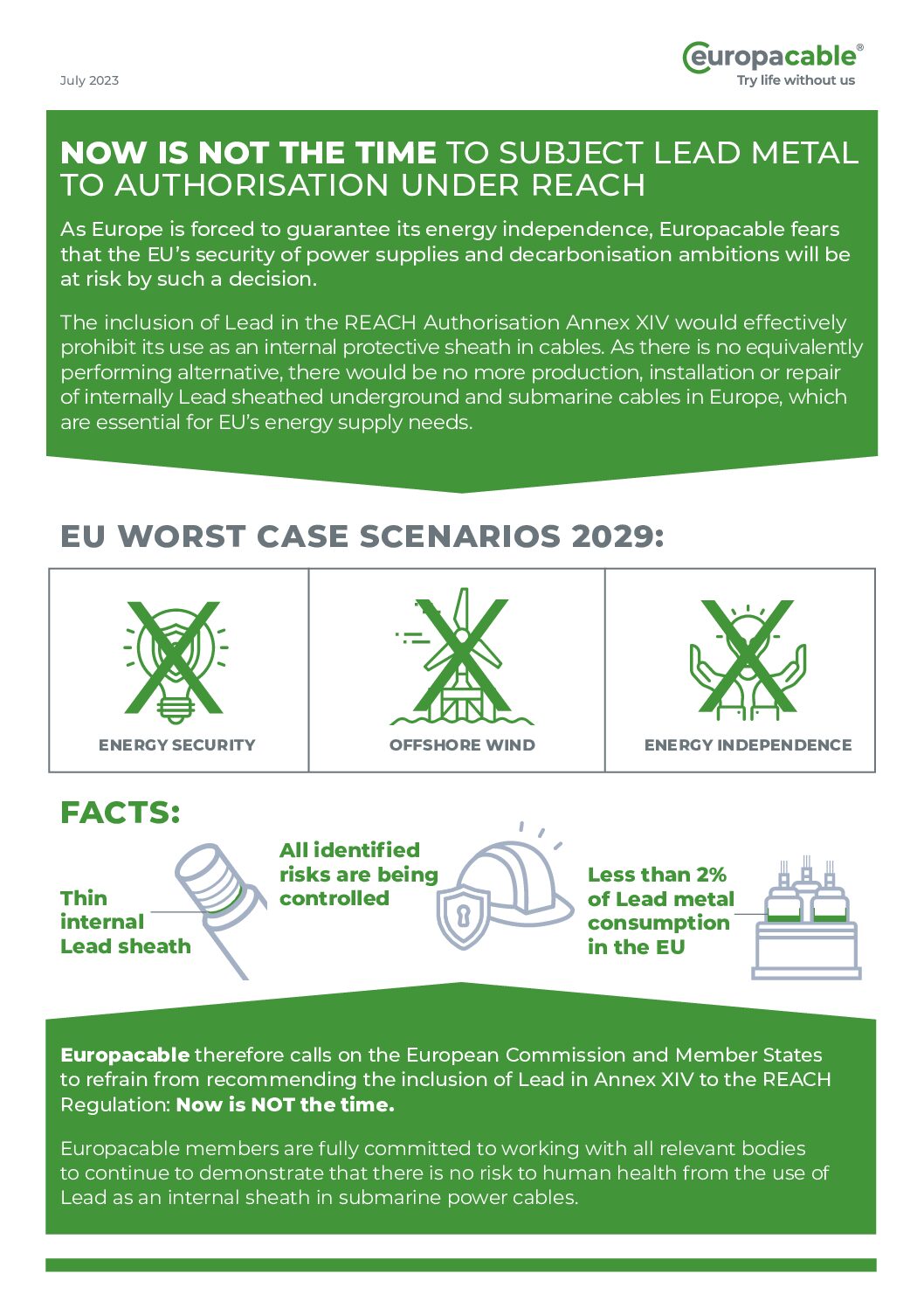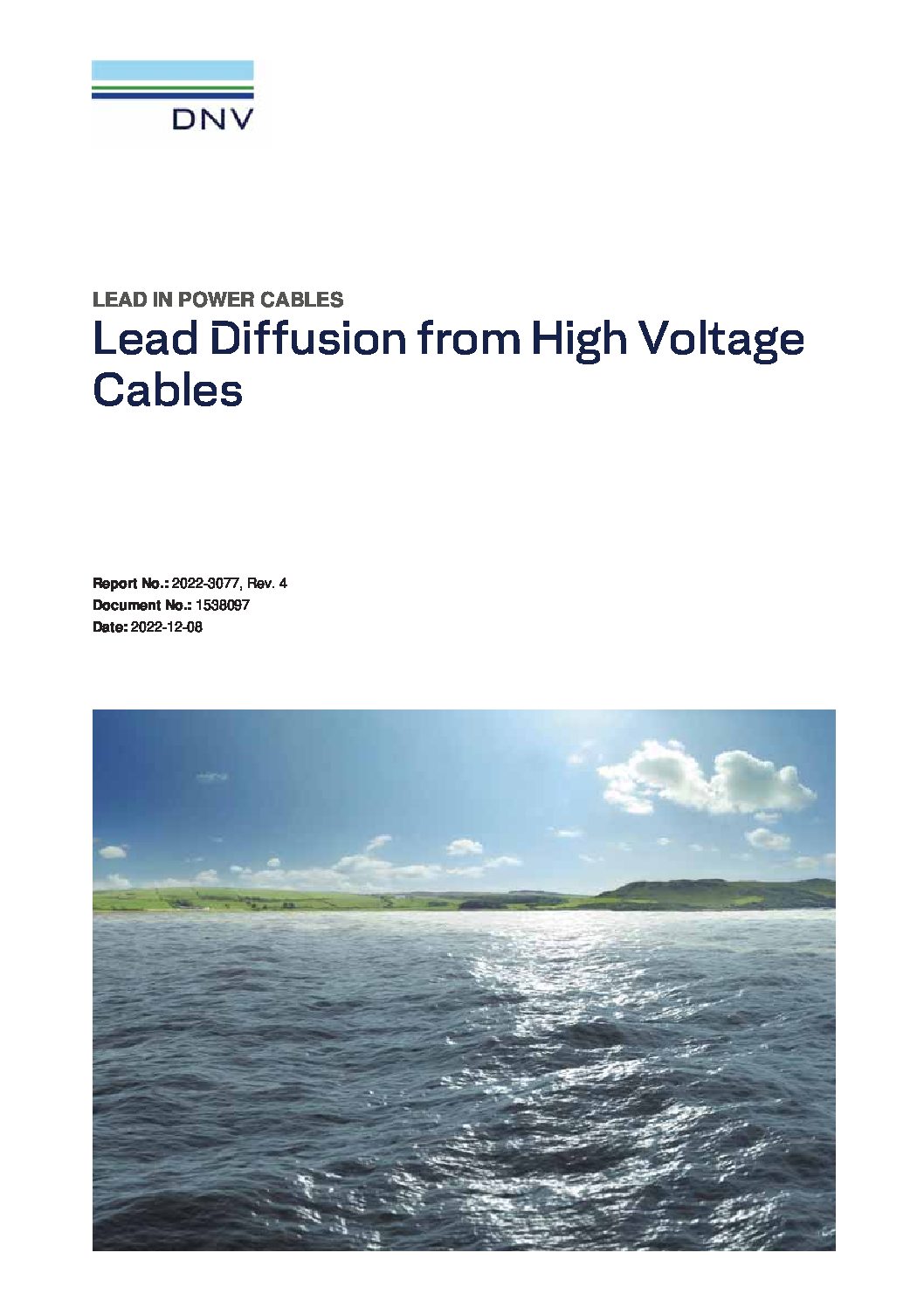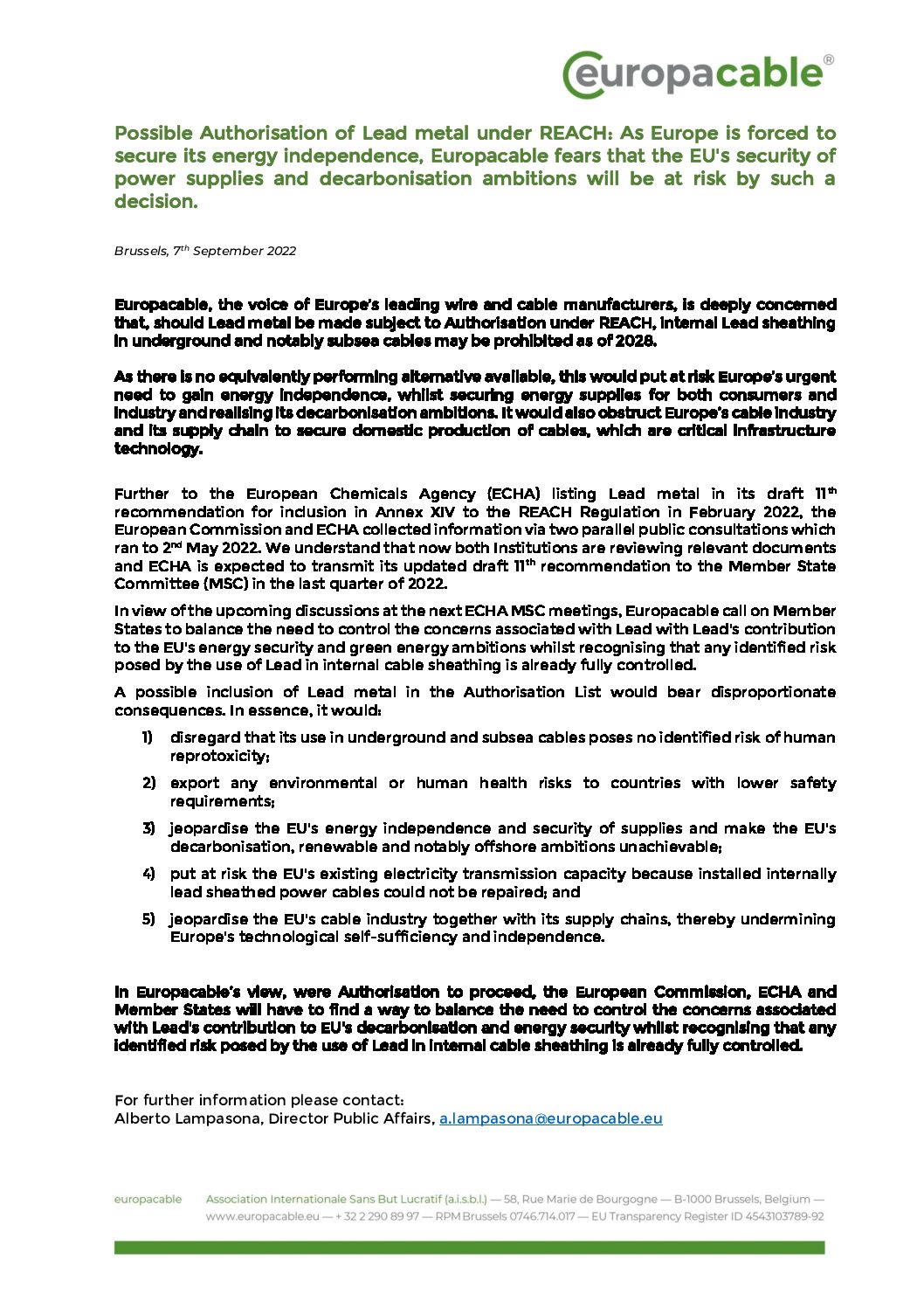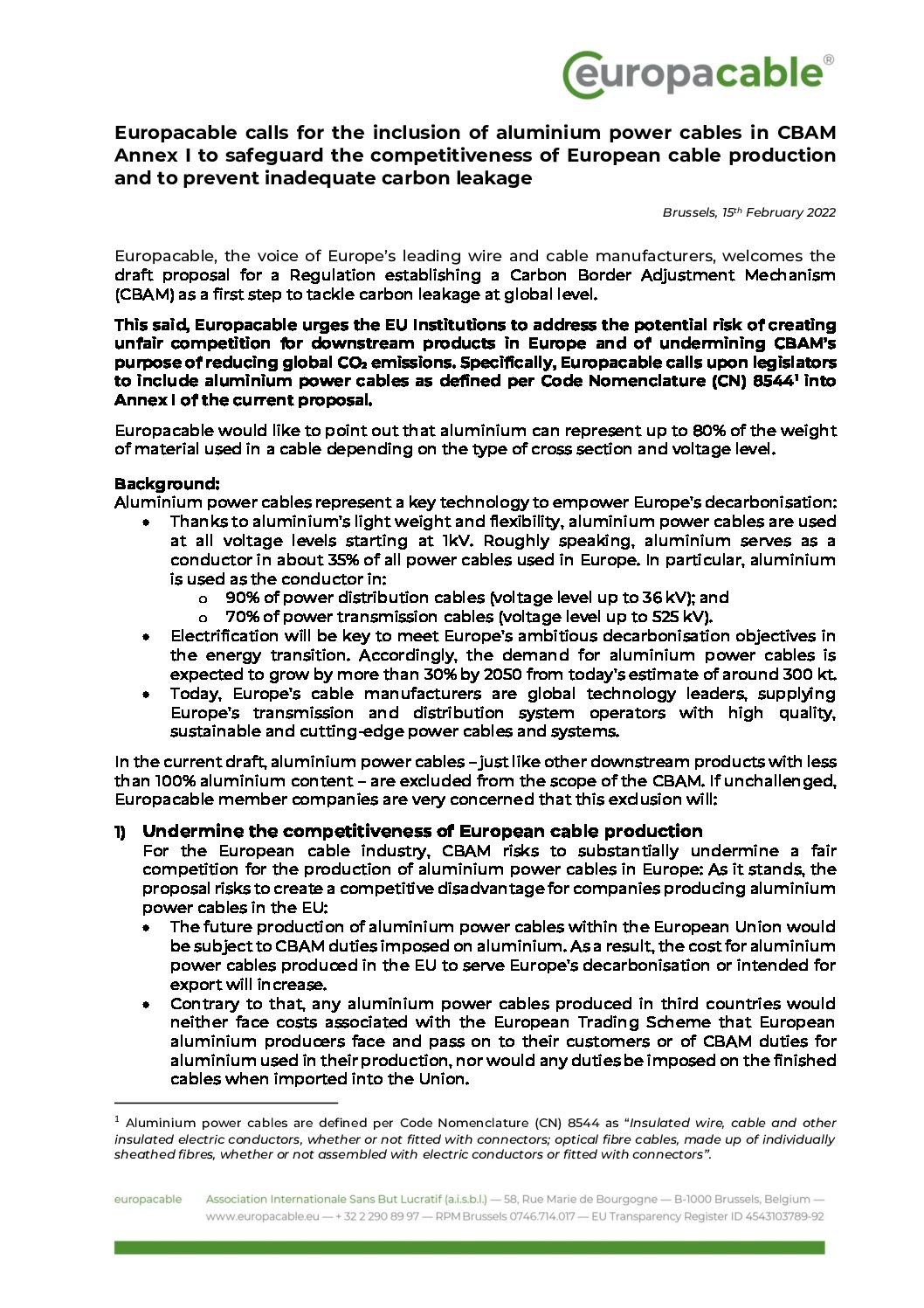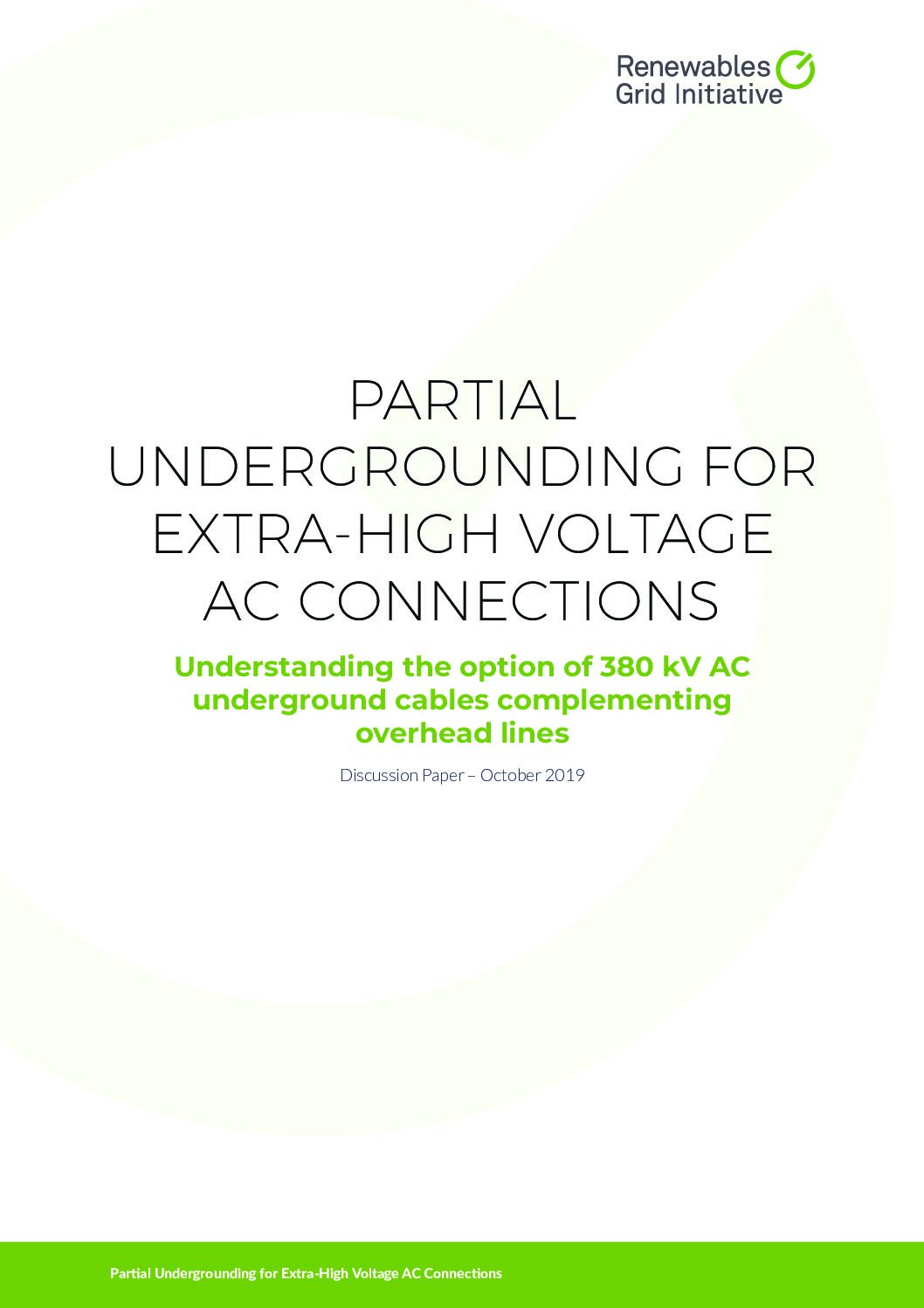«Underground and submarine cables are a core technology for Europe to meet its decarbonisation ambitions: They serve to interconnect Europe´s power systems and link renewable energy sources to the centers of electricity consumption. In short: High quality underground and submarine cables are the key to enable Europe´s energy transition and our industry is ready to deliver them.»
– Marcello Del Brenna, Chair

TOPICS
Empowering Europe´s Decarbonisation
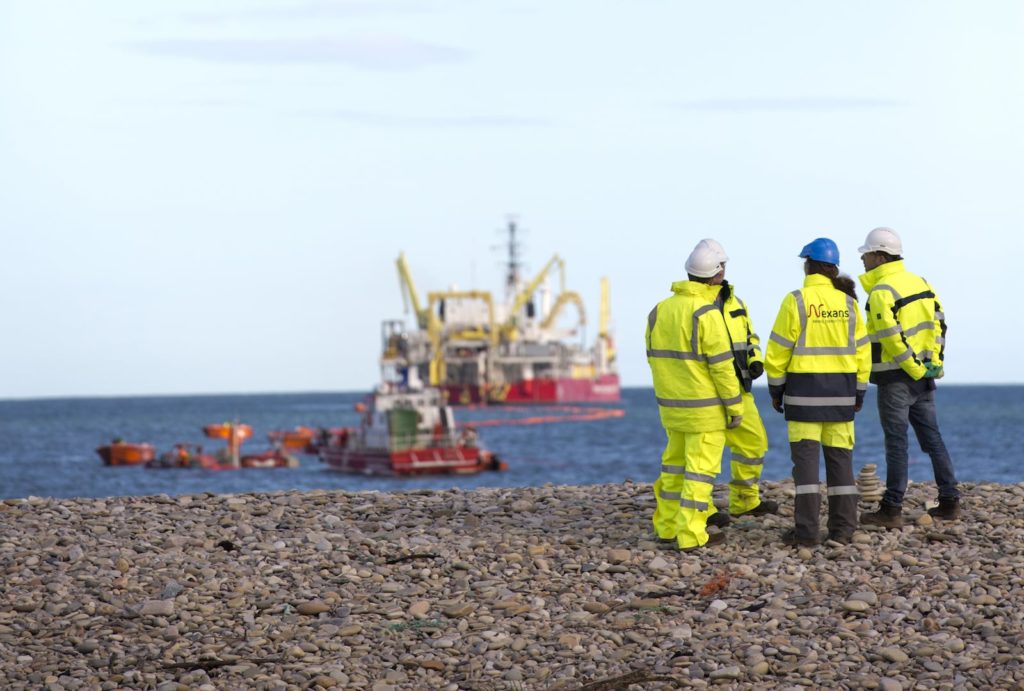
The European Green Deal commits Europe to reach climate neutrality by 2050. Modern and integrated electricity networks will provide European citizens with clean, affordable and secure electricity and create a fully integrated single European electricity market. Underground and submarine cables will empower this energy transition:
- At transmission level, land and subsea cable infrastructure will be pivotal in enabling decarbonisation by carrying on- and offshore renewable energy sources to demand areas and interconnecting countries and/or islands.
- At distribution level, cable infrastructure will be key in integrating renewable energy sources into the grid and enabling the electrification of transport, heating & cooling sector as well as industrial processes.
ENTSO-E estimates some 40,000 km of new or refurbished high and extra-high voltage power lines will be built across Europe by 2030. Over 50% of the distances to be covered will be using land and submarine cables.
Europacable member companies offer the full range of power cables needed to empower Europe’s shift towards carbon neutrality:
- High voltage Direct Current (DC) cables up to 600 kV which will be the backbone of a future system of electricity highways, securing Europe’s power supplies over long distances both on land and offshore;
- Extra high voltage Alternating Current (AC) cables up to 500 kV to enable grid extensions and facilitate the integration of renewable energies in Europe;
- High voltage power cables up to 150 kV for Europe’s future – smart – distribution grids; and
- Low and medium voltage power cables up to 36 kV to transport power to the ultimate point of consumption.
Landmark projects realised across Europe in the past years demonstrate that underground and submarine cables have become a fully available, mainstream technology. European technology leadership and high quality engineering enable Europe´s decarbonisation.
Complementing power lines in sensitive areas
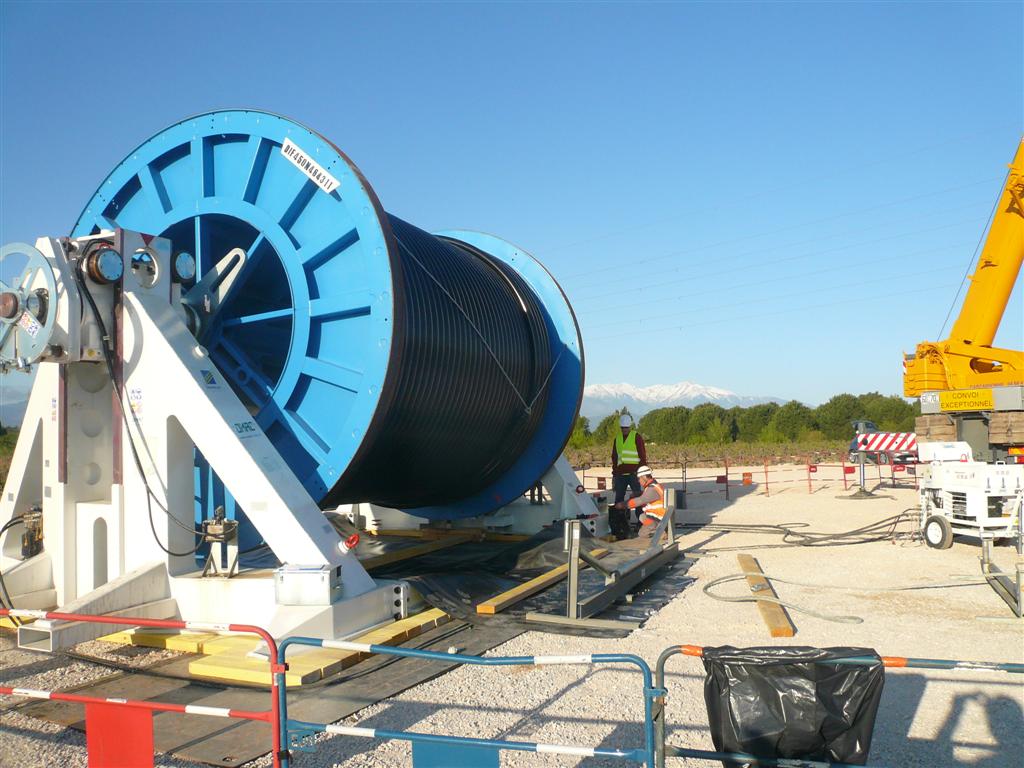
Cross linked polyethylene cables (XLPE) Extra High Voltage (EHV) Alternating Current (AC) cables are a key technology to connect power plants and substations (both onshore and offshore), transmission feeders circuits into densely populated urban environments, underground overhead lines in areas of outstanding beauty as well as underground existing overhead lines. Available in voltages from 220 KV – 500 KV, several thousands of kilometers of HVAC cables have been in service in projects around the globe over the past two decades. EHV XLPE cables are recognised as a technology that performs well based on the requirements established by the International Standard IEC 62067.
When deployed in the Partial Undergrounding Concept complementing overhead lines, 380 kV AC cables are:
- Reliable: Thoroughly tested, increasingly used, proven technology. Once in the ground, cables are well protected against any external severe weather influences.
- Sustainable: Limited environmental impact during installation and operation, no restriction in agricultural use of the trenches with reinstatement of the same topsoil.
- Affordable: While investment costs for the undergrounded section are some 3 -10 times the cost for that of covering the same stretch by overhead technology, costs for the entire line will only increase by smaller factor. At the same time, the line may be built more rapidly, with speedier route approvals, a limited visual impact and a lesser deprivation of property values in the vicinity of the cable route.
- Publicly Acceptable: Any transmission line has an environmental impact, yet experience shows that public acceptance for partially undergrounded lines is higher than for overhead lines.
Connecting remote renewable sources to centers of consumption
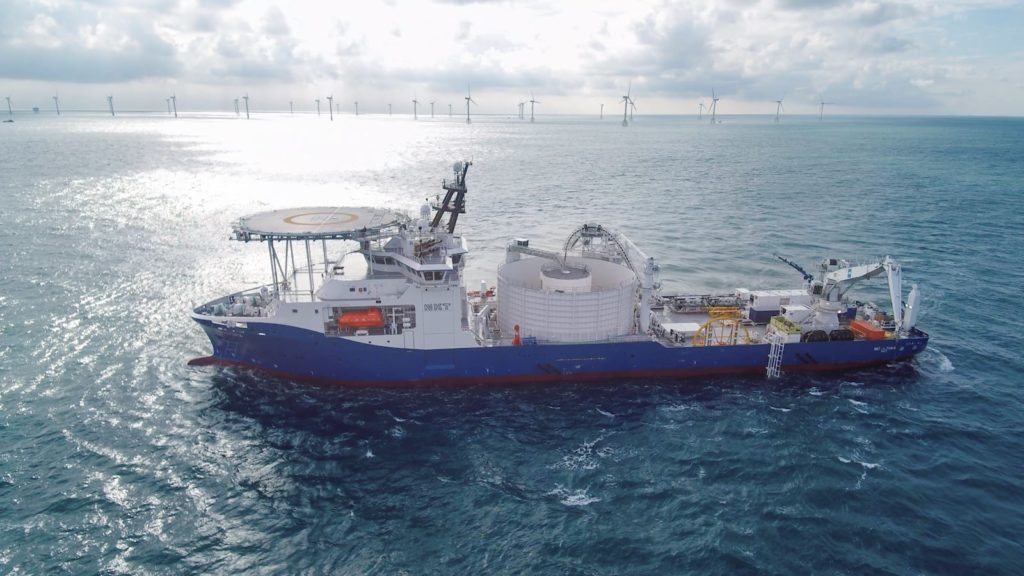
High Voltage Direct Current (HVDC) underground and submarine cables are a pivotal technology to enable Europe decarbonisation: They transport high power loads over long distances with minimal losses. They have been in commercial use since the 1950’s – but notably the recently awarded corridor projects in Germany demonstrate their potential to enable the energy transition.
Today, HVDC land and submarine cables can carry medium and high power (100 MW up to 1,000 MW) with voltages up to +/- 600 kV over distances above 50 km.
HVDC transmission cables can be used in submarine applications, either connecting offshore wind farms to land or transmitting high electrical power over long distance through the sea. Both applications will play a crucial role in enabling Europe´s decarbonisation.
In addition, HVDC cables are increasingly used for land transmission projects as higher power loads need to be transported over long distances towards centers of power consumption: The German HVDC corridor projects recently awarded demonstrate the crucial role, state-of-the art HVDC underground cables take in enabling the energy transition: connecting offshore wind generation with centers of consumption over a distance of more than 5.000 km they are crucial in helping Germany meet its energy target of 65% of electricity consumed from renewable sources by 2030.
Renewable integration and decarbonisation start at distribution level
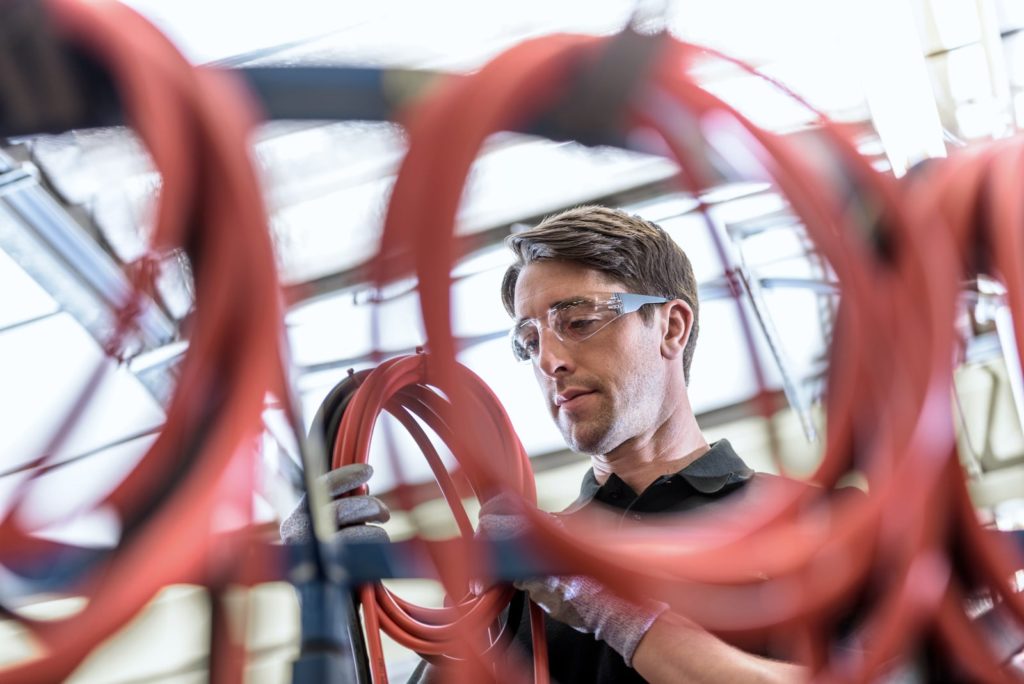
Europe´s power distribution networks require upgrading and expansion to enable Europe’s decarbonisation by 2050. Intelligent distribution power cables bringing together power and ICT technology will promote further integration of the energy, transport and telecommunications sectors thus paving the way for the electrification of the European economy
To ensure the development of a fully decarbonised energy system, safe, reliable and efficient power distribution infrastructure should be deployed all across the Continent. Europe´s power distribution networks would then need to be:
- Modern: With that Europacable means state-of-the-art grid hardware and software combining cables, accessories and switch gears with IT systems and ICT technology and thus enabling the full potential of digitalisation in developing smart cities and villages.
- Resilient: Europacable calls for the widespread undergrounding of distribution grids to safeguard against any external impacts and promote safe and secure networks able to integrate renewables into the system.
- Futureproof: Europacable calls for distribution networks to be “fit” to meet increasing future demand requirements, notably stemming from decentralised renewable energy sources generation, storage and conversion; electric vehicle charging and the shift towards electrified heating and cooling systems.
The combination of the above via state-of-the-art intelligent power distribution cables will enhance the seamless integration of decentralised renewable energy sources and enable the network digitalisation, whilst minimising power losses. Intelligent power distribution cables will be the key infrastructure technology to enhance the performance of Europe´s distribution grids tomorrow and make the electricity revolution a reality for Europe.
